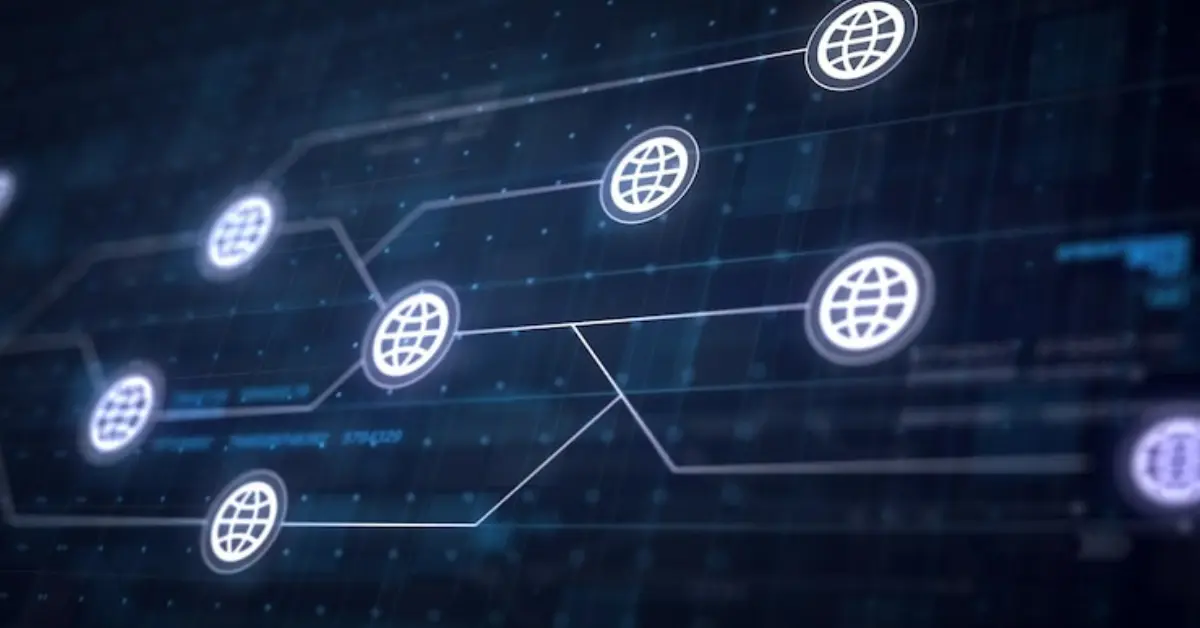In an era dominated by advancements in quantum computing, the concept of a quantum internet represents a monumental leap towards an uncharted territory of technological evolution. This groundbreaking innovation is set to redefine the paradigms of data transmission, security, and connectivity, ushering in a new age of networking. Let’s dive into the fascinating world of quantum internet, exploring its potential, how it works, and the impact it could have on our digital future.
Understanding Quantum Internet
The term “Quantum Internet” refers to a hypothetical global-scale network that uses the principles of quantum mechanics to enable secure communication and computation. Traditional classical communication systems rely on classical bits, which can exist in one of two states, 0 or 1. In contrast, quantum systems use quantum bits or qubits, which can exist in multiple states simultaneously due to the principles of superposition.
Here are some key concepts and features associated with the idea of a Quantum Internet:
- Quantum Entanglement: One of the fundamental principles of quantum mechanics is entanglement, where two or more particles become correlated and the state of one particle instantaneously influences the state of the other, regardless of the distance between them. This property is utilized for secure quantum communication.
- Quantum Key Distribution (QKD): Quantum Internet aims to use QKD to establish cryptographic keys between distant parties in a way that is theoretically secure against any computational attack, including those using quantum computers. QKD relies on the principles of quantum entanglement to detect any eavesdropping attempts.
- Quantum Teleportation: Quantum teleportation is a process by which the quantum state of a particle can be transmitted from one location to another, with the help of entanglement. While it doesn’t involve the physical transportation of matter, it allows the transfer of quantum information.
- Quantum Repeaters: Quantum signals tend to degrade over long distances due to factors such as signal loss and noise. Quantum repeaters are devices designed to extend the range of quantum communication by periodically refreshing and entangling qubits over shorter distances.
- Quantum Nodes and Processors: In a Quantum Internet, nodes would be equipped with quantum processors capable of performing quantum computations. These nodes could act as endpoints for secure communication, and quantum processors would perform specific tasks exploiting quantum parallelism.
- Hybrid Quantum-Classical Systems: The Quantum Internet is likely to be a hybrid system, integrating quantum communication with classical communication. Classical components are still necessary for various tasks, and the integration of quantum capabilities can enhance the security of classical communication.
A practical Quantum Internet is still in the experimental and theoretical stage. Researchers and scientists are making significant progress, but many technical challenges need to be overcome before a fully functional Quantum Internet becomes a reality.
Advances in quantum error correction, the development of reliable quantum repeaters, and the integration of quantum technologies into existing network infrastructure are some of the ongoing research areas in this field.
The Mechanics Behind Quantum Internet
As of my last knowledge update in January 2022, quantum internet is an area of research that is still in its early stages, and there may have been further developments since then. Quantum internet relies on the principles of quantum mechanics to enable secure communication and novel forms of information processing. Here are some key mechanics behind quantum internet:
- Quantum Entanglement:
- Quantum entanglement is a phenomenon where two or more particles become correlated in such a way that the state of one particle instantly influences the state of the other(s), regardless of the distance between them.
- In the context of quantum communication, entangled particles can be used to create qubits (quantum bits) that are intrinsically linked. Any change to the state of one entangled qubit will instantaneously affect the state of the other, enabling secure quantum key distribution.
- Quantum Key Distribution (QKD):
- QKD is a method that uses the principles of quantum mechanics to create a secure key between two parties. It often involves the transmission of qubits encoded with information and the use of entanglement for secure key exchange.
- One popular QKD protocol is the BBM92 protocol (named after its inventors Bennett, Brassard, Mermin, and others). This protocol allows two parties to share a secret key securely, and any attempt to eavesdrop on the quantum communication would disturb the entangled particles, revealing the presence of an intruder.
- Quantum Superposition:
- Quantum superposition allows quantum bits (qubits) to exist in multiple states simultaneously. This property enables quantum computers and quantum communication systems to process information in parallel, potentially solving certain problems much faster than classical systems.
- Quantum Teleportation:
- Quantum teleportation is a process that uses entanglement to transmit the quantum state of one particle to another particle at a distant location. It doesn’t involve the physical transfer of particles but rather the transfer of quantum information.
- This could be a key element in building quantum repeaters for long-distance quantum communication, as direct transmission of quantum information over long distances is challenging due to the loss of quantum coherence in traditional communication channels.
- Quantum Repeaters:
- Quantum repeaters are devices designed to extend the range of quantum communication over long distances. They use entanglement swapping and purification techniques to overcome the limitations imposed by quantum decoherence and loss of quantum information in optical fibers.
It’s important to note that quantum internet is an evolving field, and research is ongoing to address various challenges such as maintaining entanglement over long distances, developing scalable quantum repeaters, and building reliable quantum communication networks.
The Potential Impact of Quantum Internet
The potential impact of quantum internet is profound and far-reaching, promising to revolutionize the way we communicate, compute, and secure data. Unlike the classical internet, which transmits information in bits (0s and 1s), a quantum internet would use quantum bits or qubits, which can represent and store information in both 0 and 1 simultaneously thanks to superposition. Moreover, with phenomena like entanglement, actions performed on one qubit can affect another no matter the distance between them, a principle known as non-locality.
This foundational shift introduces several potential impacts:
1. Unprecedented Security
- Quantum Key Distribution (QKD): The most immediate application of quantum internet is in the realm of secure communication through QKD. It uses the principles of quantum mechanics to create theoretically unbreakable encryption. Any attempt to eavesdrop on the quantum channel would disturb the quantum states of the qubits, alerting the communicating parties to the presence of an interloper.
- Secure Voting and Auction Systems: Quantum communication could enable secure digital voting and auction systems, safeguarding the integrity and confidentiality of the process.
2. Enhanced Computational Power
- Distributed Quantum Computing: A quantum internet could interconnect quantum computers, allowing them to work together and share processing power. This network could solve complex problems much faster than classical computers or even standalone quantum computers, potentially revolutionizing fields such as drug discovery, climate modeling, and financial modeling.
3. Precision Timing
- Quantum Clock Synchronization: The unique properties of quantum mechanics can be used to synchronize clocks with unprecedented precision. This could significantly improve navigation systems, telecommunications, and the synchronization of financial transactions across the globe.
4. Advances in Science
- Quantum Sensors and Telescopes: By linking quantum sensors, scientists could create distributed quantum systems that act as highly sensitive detectors for gravitational waves or telescopes with unparalleled resolution, opening new avenues in astrophysics and fundamental physics research.
5. New Networking Technologies
- Entanglement-Based Networking: Quantum internet could leverage entanglement for direct and secure transmission of information across vast distances without the need for a traditional signal path, revolutionizing long-distance communication.
Challenges and Considerations
- Technical Challenges: Developing a fully functional quantum internet requires overcoming significant technical hurdles, including reliable qubit generation, maintaining entanglement over long distances, and integrating quantum technologies with existing infrastructure.
- Scalability: Current quantum communication systems are limited in distance and scalability. Extensive research and development are needed to build a global quantum network.
- Security Concerns: While quantum communication offers potentially unbreakable encryption, the transition period and the coexistence of quantum and classical systems could introduce new vulnerabilities.
- Ethical and Political Implications: The deployment of quantum internet will raise ethical and policy questions, particularly regarding privacy, surveillance, and access. It could exacerbate digital divides if access to quantum-enhanced security and computing resources is unevenly distributed.
Conclusion
The quantum internet represents a paradigm shift in information technology, with the potential to impact nearly every aspect of modern life. While its full realization may still be years away, the ongoing research and development efforts are laying the groundwork for a future in which quantum communication and computing could redefine what is possible in security, efficiency, and speed of global information exchange.
Challenges and Future Prospects
Certainly! Challenges and future prospects can vary across different domains, but here are some overarching themes that encompass various aspects of society, technology, and the global landscape:
Challenges:
1. Climate Change:
- The pressing challenge of climate change requires immediate and sustained global efforts to mitigate its impacts and adapt to the changing environment.
2. Global Health:
- Ongoing and emerging infectious diseases, as well as issues like antimicrobial resistance, pose significant challenges to global health.
3. Technological Disruptions:
- Rapid advancements in technology, particularly in areas like artificial intelligence, automation, and biotechnology, can lead to job displacement, ethical concerns, and societal upheavals.
4. Inequality:
- Income inequality, both within and between nations, remains a persistent challenge, affecting access to education, healthcare, and opportunities.
5. Cybersecurity:
- The increasing frequency and sophistication of cyber-attacks pose threats to individuals, businesses, and governments, requiring robust cybersecurity measures.
6. Political Instability:
- Geopolitical tensions, political unrest, and conflicts in various regions contribute to global instability, impacting peace and development.
7. Resource Depletion:
- Depletion of natural resources, including water, minerals, and arable land, poses a threat to sustainability and requires effective resource management.
8. Public Health Crises:
- Events like pandemics and other health crises can overwhelm healthcare systems and disrupt economies, necessitating preparedness and global cooperation.
Future Prospects:
1. Renewable Energy and Sustainability:
- Transitioning to renewable energy sources and adopting sustainable practices offer prospects for addressing climate change and promoting environmental conservation.
2. Biotechnology and Healthcare Innovations:
- Advances in biotechnology, personalized medicine, and healthcare innovations hold the promise of improving overall health outcomes and addressing global health challenges.
3. Space Exploration and Colonization:
- Exploration of space and potential colonization of other planets present exciting possibilities for humanity’s future, including access to new resources and the potential for interplanetary habitation.
4. Education Technology:
- Leveraging technology for education, such as online learning platforms and virtual reality, offers the potential to increase access to quality education globally.
5. Artificial Intelligence and Ethics:
- Ethical development and application of artificial intelligence can lead to breakthroughs in various fields, but careful consideration and regulation are essential to address potential risks.
6. Global Collaboration:
- Strengthening international cooperation and diplomacy can help address global challenges, including climate change, pandemics, and geopolitical tensions.
7. Inclusive Economic Growth:
- Focusing on policies and initiatives that promote inclusive economic growth can contribute to reducing inequality and improving overall well-being.
8. Digital Transformation:
- The continued evolution of digital technologies and the widespread adoption of Industry 4.0 principles offer opportunities for increased efficiency, connectivity, and innovation across industries.
Navigating these challenges and realizing future prospects requires a concerted effort from governments, businesses, communities, and individuals on a global scale. Adaptable and forward-thinking strategies will be crucial to creating a sustainable and inclusive future.



